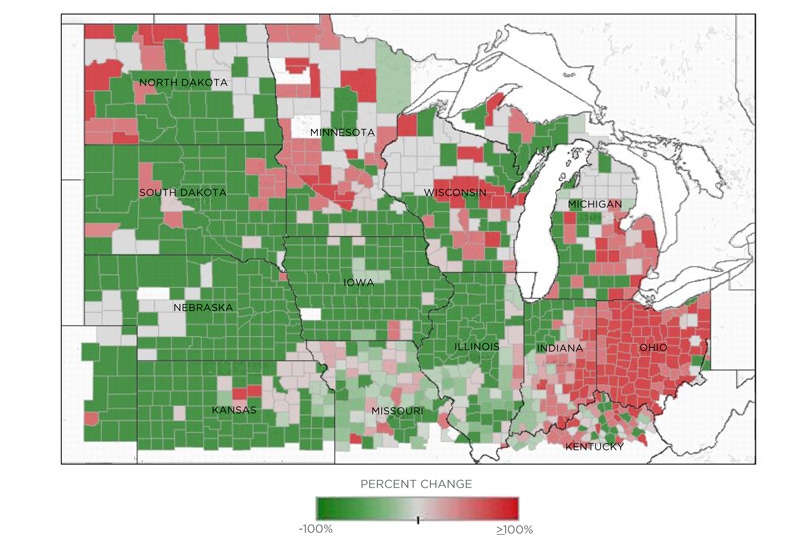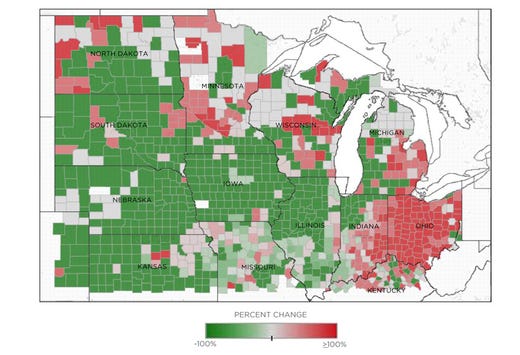
 Ohio and eastern Indiana could face a significant loss in corn yield in 2012 due to weather patterns. That’s according to The Climate Corporation, which presented its 2012 report on La Niña and its effect on the spring planting period at Commodity Classic in Nashville, Tenn., last week.
Ohio and eastern Indiana could face a significant loss in corn yield in 2012 due to weather patterns. That’s according to The Climate Corporation, which presented its 2012 report on La Niña and its effect on the spring planting period at Commodity Classic in Nashville, Tenn., last week.
"La Niña is generally associated with above average precipitation across the north-central United States, Ohio Valley, upper Southeast, and Pacific Northwest, and below average precipitation in the Southwest, central and southern Rockies and Great Plains, and Florida" explains the report, which is confirmed by the NASA Earth Observatory.
The Climate Corporation took historical data on La Niña to analyze what could be at stake for Midwestern farmers this spring. They found that if La Niña persists through spring, growers in Ohio and eastern Indiana may experience a 100% increase in the likelihood of a planting delay. La Niña is likely to persist this spring, according to the National Oceanic and Atmospheric Administration’s (NOAA’s) Climate Prediction Center. Jeff Hamlin, director of agronomic research for the Climate Corporation, said that the timeline for the persistance of La Niña may stretch through the end of May.
The losses in corn for Ohio and eastern Indiana could reach around 40 million bu., or $230 million, according to the report.
"According to the USDA/NASS, as of Sunday May 15, corn was 7% planted, which was 76% behind last year and 6% behind the five-year average" said Allen Geyer, Peter Thomison in a recent Ohio State University extension article. While the outlook for Ohio and Eastern Illinois look grim, the western Corn Belt may benefit from the persisting La Niña trend.
“La Niña conditions tend to be good for the western Corn Belt at least historically,” Hamlin said. These areas are likely to have a 100% decrease in the likelihood of experiencing a planting delay (see chart).
Climate Corporation recently upgraded its weather insurance program for corn and soybean growers to help farmers prevent major losses due to adverse weather. The company automatically generates payments when adverse weather occurs, such as flooding, heat stress, or early frost.
“The weather insurance has been received very well by growers,” Hamlin said. The company uses technology that collects weather data from more than 2.5 million locations.
“I think everyone recognizes that weather is the variable that impacts yield. Weather insurance can give growers peace of mind that regardless of what comes, they’re going to have the financial protection to manage those weather risks,” Hamlin said.
For more information, visit www.climate.com.
About the Author(s)
You May Also Like






